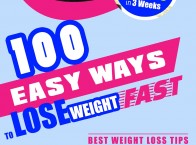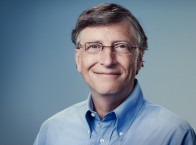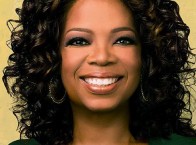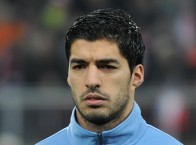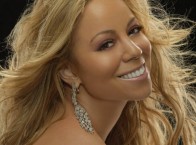50 things about musician Sir James Paul McCartney.
1. Sir James Paul McCartney was born 18 June 1942. He is an English singer-songwriter, multi-instrumentalist, and composer.
2. With John Lennon, George Harrison, and Ringo Starr, he gained worldwide fame as the bassist of British rock band the Beatles, one of the most popular and influential groups in the history of pop music.
3. His songwriting partnership with Lennon is one of the most celebrated of the 20th century.
4. After the band's break-up, he pursued a solo career and formed Wings with his first wife, Linda, and Denny Laine.
5. Paul McCartney has been recognized as one of the most successful composers and performers of all time, with 60 gold discs and sales of over 100 million albums and 100 million singles of his work with the Beatles and as a solo artist.
6. More than 2,200 artists have covered his Beatles song "Yesterday", more than any other copyrighted song in history.
7. Wings' 1977 release "Mull of Kintyre" is one of the all-time best-selling singles in the UK.
8. A two-time inductee into the Rock and Roll Hall of Fame, as a member of The Beatles in 1988, and as a solo artist in 1999, and a 21-time Grammy Award winner (having won both individually and with the Beatles), McCartney has written, or co-written 32 songs that have reached number one on the Billboard Hot 100, and as of 2014 he has sold more than 15.5 million RIAA-certified units in the United States.
9. McCartney, Lennon, Harrison and Starr received MBEs in 1965, and in 1997, McCartney was knighted for his services to music.
10. Paul McCartney has released an extensive catalogue of songs as a solo artist and has composed classical and electronic music.
11. Paul McCartney has taken part in projects to promote international charities related to such subjects as animal rights, seal hunting, land mines, vegetarianism, poverty, and music education.
12. He has married three times and is the father of five children.
13. Paul McCartney's full name is James Paul McCartney. He was born on 18 June 1942 in Walton Hospital, Liverpool, England, where his mother, Mary Patricia (née Mohin) (1909-1956), had qualified to practice as a nurse.
14. His father, James ("Jim") McCartney (1902-1976), was absent from his son's birth due to his work as a volunteer firefighter during World War II.
15. Paul McCartney has one younger brother, Michael.
16. Though Paul and his brother baptised in their mother's Catholic faith, their father was a former Protestant turned agnostic, and religion was not emphasized in the household.
17. In 1953, he passed the 11-plus exam, with only three others out of ninety examinees, gaining admission to the Liverpool Institute.
18. In 1954, he met schoolmate George Harrison on the bus to the Institute from his suburban home in Speke. Harrison had also passed the exam, meaning he could attend a grammar school rather than a secondary modern school, where most pupils went until becoming eligible for work. The two quickly became friends; McCartney later admitted: "I tended to talk down to him because he was a year younger."
19. McCartney's mother Mary was a midwife and the family's primary wage earner, enabling them to move into 20 Forthlin Road in Allerton, where they lived until 1964.
20. McCartney's father was a trumpet player and pianist who led Jim Mac's Jazz Band in the 1920s. He kept an upright piano in the front room, encouraged his sons to be musical and advised Paul to take piano lessons, but he preferred to learn by ear.
21. Jim gave Paul a nickel-plated trumpet for his fourteenth birthday, but when rock and roll became popular on Radio Luxembourg, McCartney traded it for a £15 Framus Zenith (model 17) acoustic guitar, rationalizing that it would be difficult to sing while playing a trumpet.
22. He found it difficult to play guitar right-handed, but after noticing a poster advertising a Slim Whitman concert and realizing that Whitman also played left-handed, he reversed the order of the strings.
23.
24. Paul McCartney wrote his first song, "I Lost My Little Girl", on the Zenith, and composed another early tune that would become "When I'm Sixty-Four" on the piano.
25.
26. American rhythm and blues influenced him, and Little Richard was his schoolboy idol; "Long Tall Sally" was the first song McCartney performed in public, at a Butlins holiday camp talent competition.
27.
28. At the age of fifteen, McCartney met Lennon and his band, the Quarrymen, at the St Peter's Church Hall fête in Woolton on 6 July 1957. Quarrymen played a mix of rock and roll and skiffle, a type of popular music with jazz, blues and folk influences.
29. The band invited McCartney to join soon afterwards as a rhythm guitarist, and he formed a close working relationship with Lennon. Harrison joined in 1958 as lead guitarist, followed by Lennon's art school friend Stuart Sutcliffe on bass, in 1960.
30. By May 1960 the band had tried several names, including Beatals, Johnny and the Moondogs and the Silver Beetles. They adopted the name the Beatles in August 1960 and recruited drummer Pete Best shortly before a five-engagement residency in Hamburg.
31. Informally represented by Allan Williams, the Beatles' first booking was for a series of performances in Hamburg, starting in 1960.
32. In 1961, Sutcliffe left the band and McCartney reluctantly became their bass player.
33. They recorded professionally for the first time while in Hamburg, credited as the Beat Brothers, as the backing band for English singer Tony Sheridan on the single "My Bonnie". This brought them to the attention of Brian Epstein, a key figure in their subsequent development and success. He became their manager in January 1962.
34. Ringo Starr replaced Best in August, and the band had their first hit, "Love Me Do", in October, becoming popular in the UK in 1963, and in the US a year later.
35. Their fans' hysteria became known as "Beatlemania", and the press sometimes referred to McCartney as the "cute Beatle".
36. In August 1965, the Beatles released the McCartney composition "Yesterday", featuring a string quartet. Included on the Help! LP, the song was the group's first recorded use of classical music elements and their first recording that involved only a single band member.
37. "Yesterday" became the most covered song in popular music history.
38. After the Beatles' break-up in 1970, McCartney continued his musical career with his first solo release, McCartney, a US number-one album. Apart from some vocal contributions from Linda, McCartney is a one-man album, with Paul providing compositions, instrumentation and vocals.
39. In September 1971, the McCartneys' daughter Stella was born, named in honour of Linda's grandmothers, both of whom were named Stella.
40. The most successful single of McCartney's solo career, it achieved double the sales of the previous record holder, "She Loves You", and went on to sell 2.5 million copies and hold the UK sales record until the 1984 charity single, "Do They Know It's Christmas?".
41. In 1982 McCartney collaborated with Stevie Wonder on the Martin-produced number-one hit "Ebony and Ivory", included on McCartney's Tug of War LP, and with Michael Jackson on "The Girl Is Mine" from Thriller. "Ebony and Ivory" was McCartney's record 28th single to hit number one on the Billboard 100.
42. In 1984, McCartney starred in the musical Give My Regards to Broad Street, a feature film he also wrote and produced which included Starr in an acting role.
43. Paul McCartney participated in Live Aid, performing "Let it Be", but technical difficulties rendered his vocals and piano barely audible for the first two verses, punctuated by squeals of feedback. Equipment technicians resolved the problems and David Bowie, Alison Moyet, Pete Townshend and Bob Geldof joined McCartney on stage, receiving an enthusiastic crowd reaction.
44. In 1990, the US publication Amusement Business presented McCartney with an award for the highest grossing show of the year; his two performances at Berkeley earned over $3.5 million.
45. He performed for the largest paying stadium audience in history on 21 April 1990, when 184,000 people attended his concert at Maracanã Stadium in Rio de Janeiro, Brazil.
46. McCartney ventured into orchestral music in 1991, when the Royal Liverpool Philharmonic Society commissioned a musical piece by him to celebrate its sesquicentennial. He collaborated with composer Carl Davis, producing Liverpool Oratorio. The performance featured opera singers Kiri Te Kanawa, Sally Burgess, Jerry Hadley and Willard White, with the Royal Liverpool Philharmonic Orchestra and the choir of Liverpool Cathedral.
47. In 1991, McCartney performed a selection of acoustic-only songs on MTV Unplugged and released a live album of the performance titled Unplugged (The Official Bootleg).
48. McCartney played drums on the Beatles' songs "Back in the U.S.S.R.", "Dear Prudence", "Martha My Dear", "Wild Honey Pie" and "The Ballad of John and Yoko".
49. McCartney's earliest musical influences include Little Richard, Elvis Presley, Buddy Holly, Carl Perkins, and Chuck Berry.
50. McCartney called Little Richard an idol, whose falsetto vocalisations inspired McCartney's own vocal technique.
Source: Wikipedia.org

 Share on Facebook
Share on Facebook










